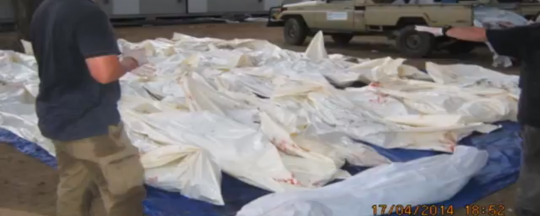The April 17 massacre of at least 47 civilians in the UNMISS base in Bor was well organized and took place under the watch of SPLA-Juba forces, police, and Ugandan troops, according to the results of a UN investigation.
This contradicts earlier claims that the assault was the result of peaceful protestors being provoked to violence by UN peacekeepers.
“There are reasonable grounds to believe that the attack was planned in advance,” said a detailed report on the attack released by UNMISS earlier this week.
During the attack, a mob of 100-300 armed Dinka youth approached the fortified UNMISS base in Bor where thousands of mostly Nuer civilians had taken shelter in a Protection of Civilians (PoC) camp.
Two youth representatives from the mob delivered a letter of protest at the base’s main gate, while the mob proceeded without stopping to the north and east sides of the base which bordered the Protection of Civilians (PoC) area.
The mob then stormed the base from multiple points at the sound of a whistle, according to some witnesses, exploiting weaknesses in the defenses and descending on the civilians: shooting, stabbing, beating, and looting.
“The fact that the attack began almost the instant that the crowd reached the PoC site, in conjunction with the timing of the delivery of the letter to UNMISS immediately before the shooting started, suggests that the attack was not spontaneous,” said the UN.
The attackers apparently had good knowledge of the layout of the base “and organized their method of attack accordingly,” UNMISS reported, adding that a spy may have infiltrated the base earlier to learn about the compound’s weaknesses.
“Escape routes were targeted, in particular the attack from the southern perimeter directly aimed at IDPs fleeing south from the PoC site. Several attackers were positioned at elevated points along the perimeters, with at least one acting as a sniper on the northern perimeter,” UNMISS said.
Further, UNMISS said that armed men had warned foreigners inside the camp to leave in the days before April 17, and that youth from Bor South, Twic East, and Duk Counties had traveled to Bor and participated in the massacre.
“This would have required advance notice,” the report said.
The report did not mention any immediate, coordinated response to the attack by UNMISS peacekeepers, the SPLA-Juba, South Sudanese police, or Ugandan troops — all of whom were present.
“There is ample information suggesting that Government security forces were present before and during the attack and failed to stop the violence,” the report read.
According to UNMISS, several witnesses reported that around 20 police officers, SPLA-Juba, and Ugandan personnel, along with one or two vehicles, were present outside the base before the start of the attack, and that they “did nothing to stop the advance.” UNMISS military officers said they saw 15 to 20 uniformed SPLA and SSNPS personnel standing and “observing.”
UNMISS peacekeepers, who were informed of the approaching mob one hour and twenty five minutes before the shooting began, did not mobilize until 20 minutes after the first shots were fired, the report said.
Instead, individual peacekeepers shot at the attackers from fixed positions. In one point along the base’s wall, a group of peacekeepers were “overpowered” by 20-30 youth. The report did not mention if these peacekeepers fired any shots or if the 20-30 youth had guns.
After 20 minutes, a UNMISS “Quick Reaction Force” deployed armed with rifles, machine guns, and rounds from an armored personnel carrier. Ten minutes later, they reached the PoC where the shooting was taking place. Ten to fifteen minutes after that, the attackers were repulsed.




